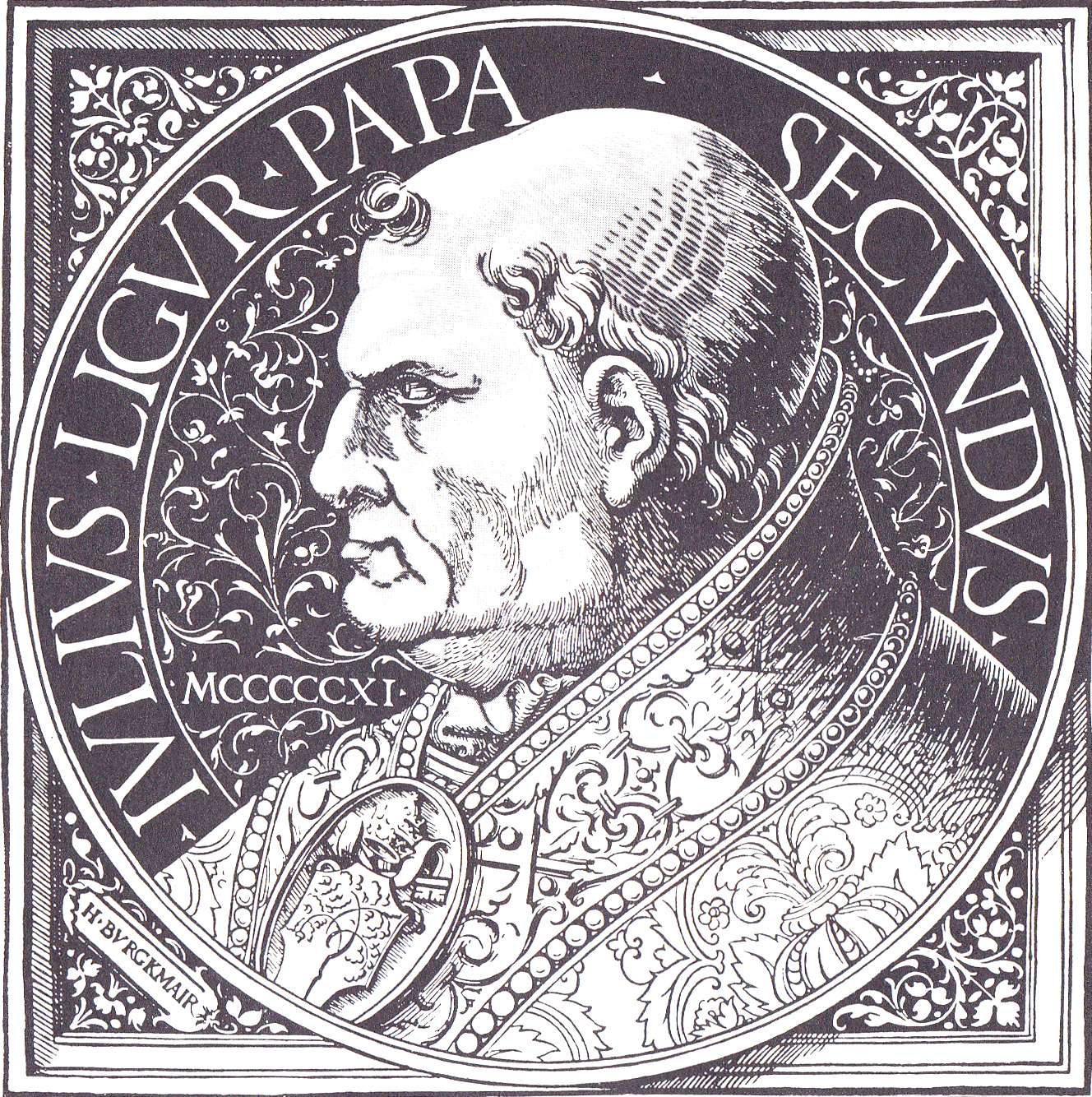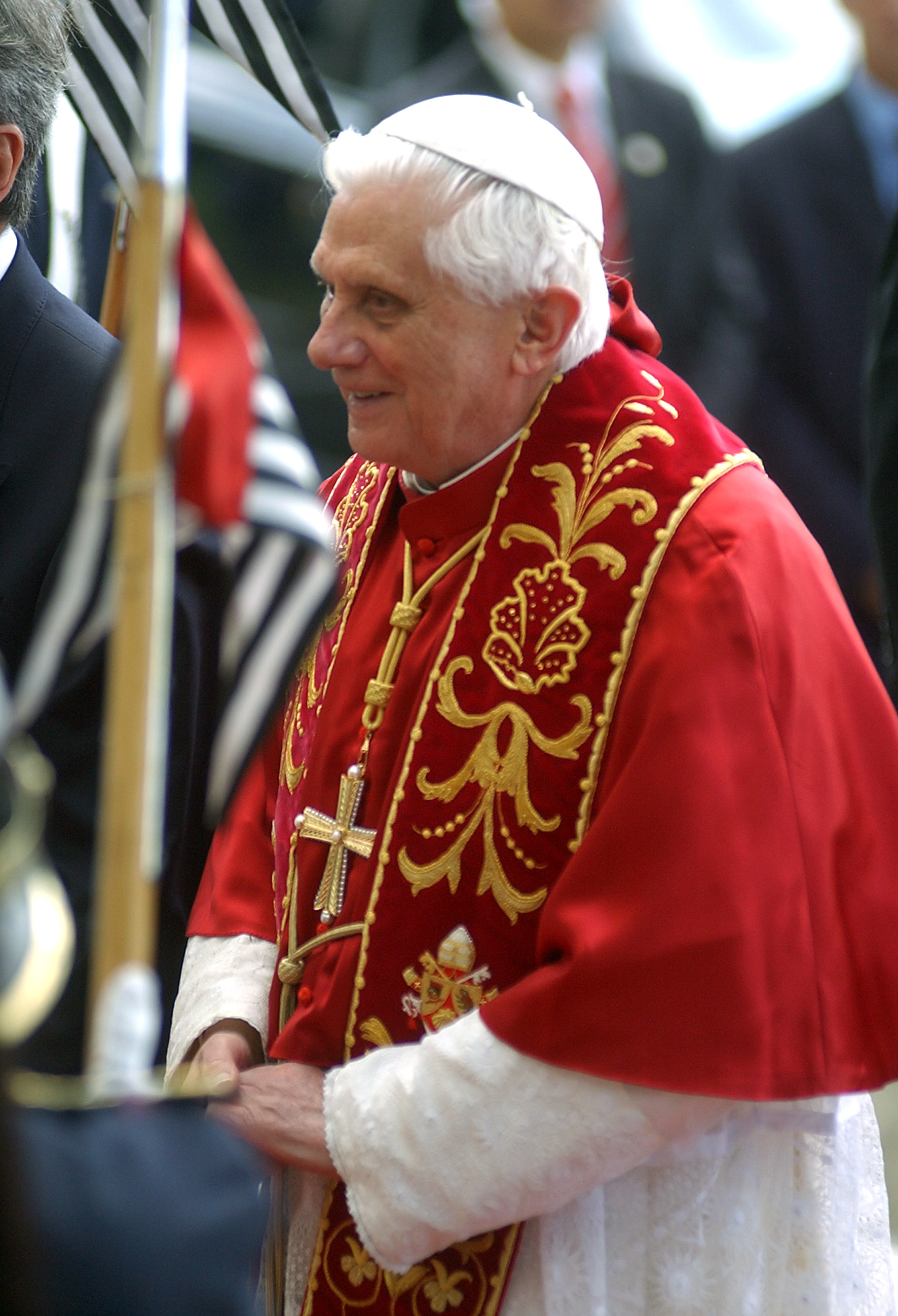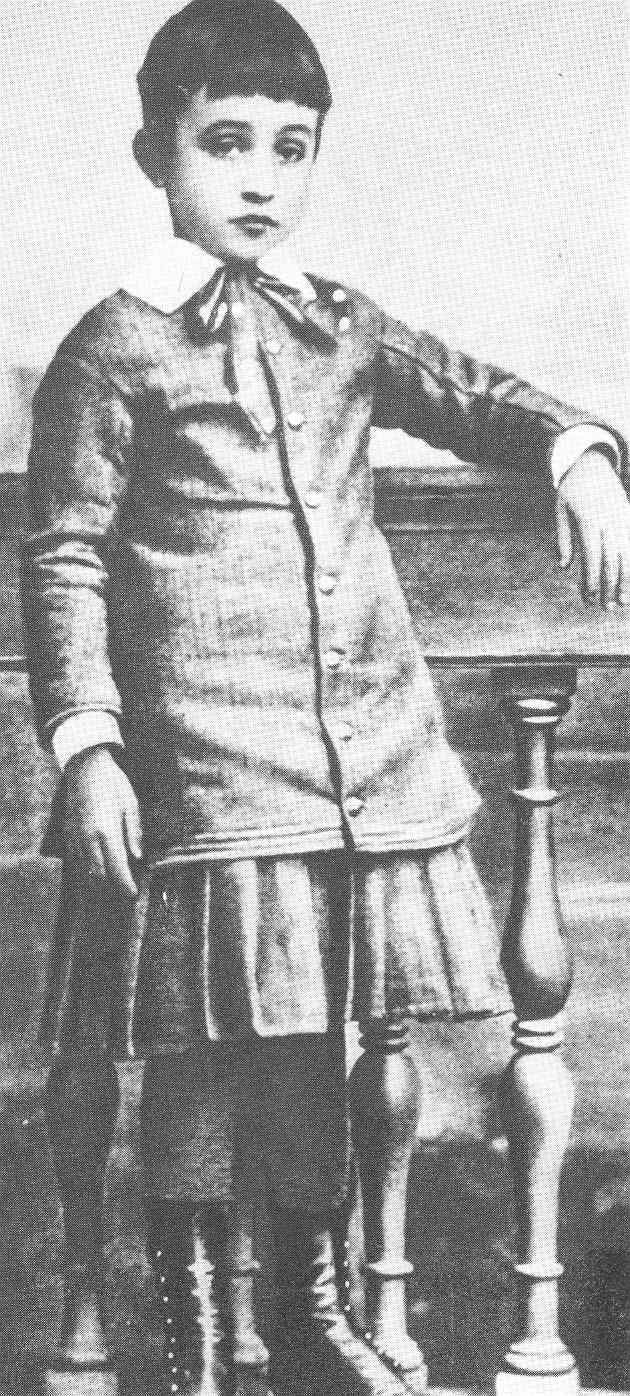|
Camauro
A camauro (from the Latin and from the Greek , meaning "camel-skin hat") is a cap traditionally worn by the pope, the head of the Catholic Church. Construction Camauros are traditionally made of red velvet or silk and white ermine fur, or of white damask fabric with fur for the hat worn during the octave of Easter. It is constructed with the rear panels shorter than the front panels, so it sits lower on the neck and ears in the rear, providing more warmth and comfort. Its red-and-white construction has led it to be compared to the hat worn by Santa Claus. History and use The camauro emerged in the 12th century, originally being worn by both cardinals -- without the fur trim --and the Pope in place of the biretta. It perhaps shares a common ancestor with the zucchetto, another hat worn by high-ranking Catholic prelates. In 1464 it was restricted to the Pope, with cardinals wearing the scarlet zuchetto instead. During the Rennaisance era, when the hat appears in a 1512 po ... [...More Info...] [...Related Items...] OR: [Wikipedia] [Google] [Baidu] |
Gammarelli
Gammarelli (full name Ditta Annibale Gammarelli) is a tailor of Vestment#Western Christian vestments, liturgical vestments and the official clothier of the pope. The shop opened in 1798 and is located in Rome, just off the Piazza della Minerva and near the Pantheon, Rome, Pantheon. History Gammarelli began in 1798 when Giovanni Antonio Gammarelli opened the business, originally serving Roman clergy. After Giovanni, his son Filippo took over the shop, and then Filippo's son, Annibale, succeeded his father. In 1874, Annibale moved the shop from its original location on the Via del Baulari to its current storefront on Via Santa Chiara 34, where it is surrounded by other vendors of church goods in an area that has been compared to London's Savile Row. It is located in the same building as the Pontifical Ecclesiastical Academy. Annibale's sons Bonaventura and Giuseppe renamed the shop "Ditta Annibale Gammarelli" in honor of their father. Bonaventura's son Annibale took over from his fa ... [...More Info...] [...Related Items...] OR: [Wikipedia] [Google] [Baidu] |
Santa Claus
Santa Claus (also known as Saint Nicholas, Saint Nick, Father Christmas, Kris Kringle or Santa) is a legendary figure originating in Western Christian culture who is said to bring gifts during the late evening and overnight hours on Christmas Eve. Christmas elves are said to make the gifts in Santa's workshop, while flying reindeer pull his sleigh through the air. The popular conception of Santa Claus originates from folklore traditions surrounding the 4th-century Christian bishop Saint Nicholas, the patron saint of children. Saint Nicholas became renowned for his reported generosity and secret gift-giving. The image of Santa Claus shares similarities with the English figure of Father Christmas, and they are both now popularly regarded as the same person. Santa is generally depicted as a portly, jolly, white- bearded man, often with spectacles, wearing a red coat with white fur collar and cuffs, white-fur-cuffed red trousers, a red hat trimmed with white fur, a b ... [...More Info...] [...Related Items...] OR: [Wikipedia] [Google] [Baidu] |
Pope
The pope is the bishop of Rome and the Head of the Church#Catholic Church, visible head of the worldwide Catholic Church. He is also known as the supreme pontiff, Roman pontiff, or sovereign pontiff. From the 8th century until 1870, the pope was the sovereign or head of state of the Papal States, and since 1929 of the much smaller Vatican City state. From a Catholic viewpoint, the primacy of the bishop of Rome is largely derived from his role as the apostolic successor to Saint Peter, to whom Petrine primacy, primacy was conferred by Jesus, who gave Peter the Keys of Heaven and the powers of "binding and loosing", naming him as the "rock" upon which the Church would be built. The current pope is Leo XIV, who was elected on 8 May 2025 on the second day of the 2025 papal conclave. Although his office is called the papacy, the ecclesiastical jurisdiction, jurisdiction of the episcopal see is called the Holy See. The word "see" comes from the Latin for 'seat' or 'chair' (, refe ... [...More Info...] [...Related Items...] OR: [Wikipedia] [Google] [Baidu] |
Pope Julius II
Pope Julius II (; ; born Giuliano della Rovere; 5 December 144321 February 1513) was head of the Catholic Church and ruler of the Papal States from 1503 to his death, in February 1513. Nicknamed the Warrior Pope, the Battle Pope or the Fearsome Pope, it is often speculated that he had chosen his papal name not in honor of Pope Julius I but in emulation of Julius Caesar. One of the most powerful and influential popes, Julius II was a central figure of the High Renaissance and left a significant cultural and political legacy. As a result of his policies during the Italian Wars, the Papal States increased their power and centralization, and the office of the papacy continued to be crucial, diplomatically and politically, during the entirety of the 16th century in Italy and Europe. In 1506, Julius II established the Vatican Museums and initiated the rebuilding of the St. Peter's Basilica. The same year he organized the famous Swiss Guard for his personal protection and commanded a su ... [...More Info...] [...Related Items...] OR: [Wikipedia] [Google] [Baidu] |
Pope Urban VIII
Pope Urban VIII (; ; baptised 5 April 1568 – 29 July 1644), born Maffeo Vincenzo Barberini, was head of the Catholic Church and ruler of the Papal States from 6 August 1623 to his death, in July 1644. As pope, he expanded the papal territory by force of arms and advantageous politicking, and was also a prominent patron of the arts, commissioning works from artists like Gian Lorenzo Bernini and a reformer of Church missions. His papacy also covered 21 years of the Thirty Years' War. The massive debts incurred during his pontificate greatly weakened his successors, who were unable to maintain the papacy's longstanding political and military influence in Europe. He was also an opponent of Copernicanism and was involved in the Galileo affair, which saw the astronomer tried for heresy. He is the last pope to date to take the papal name ''Urban''. Biography Early life Maffeo Vincenzo Barberini was born in April 1568, the son of Antonio Barberini, a Florentine nobleman, and C ... [...More Info...] [...Related Items...] OR: [Wikipedia] [Google] [Baidu] |
Hermeneutic Of Continuity
The Hermeneutics of the Second Vatican Council, or the Hermeneutics of Vatican II, refers to the different interpretations of the Second Vatican Council given by theologians and historians in relation to the Roman Catholic Church in the period following the Council. The two leading interpretations are the "hermeneutic of continuity" (or "hermeneutic of the reform") and the contrasting "hermeneutic of rupture" (or "hermeneutic of discontinuity"), with some proposing a "third hermeneutic" along the lines of John W. O'Malley. This field of research is taught in some universities and explored by learned societies such as the School of Bologna and the John XXIII Foundation for Religious Sciences. Historians such as Giuseppe Alberigo, John W. O'Malley, Christoph Theobald, Gilles Routhier, Romano Amerio and Roberto de Mattei research perceived or actual ruptures with preconciliar Catholicism from both progressive and traditionalist perspectives. Meanwhile, Benedict XVI has emphasized t ... [...More Info...] [...Related Items...] OR: [Wikipedia] [Google] [Baidu] |
Traditionalist Catholicism
Traditionalist Catholicism is a movement that emphasizes beliefs, practices, customs, traditions, liturgical forms, devotions and presentations of teaching associated with the Catholic Church before the Second Vatican Council (1962–1965). Traditionalist Catholics particularly emphasize the Tridentine Mass, the Roman Rite liturgy largely replaced in general use by the post-Second Vatican Council Mass of Paul VI. Many Traditionalist Catholics disliked the liturgical changes that followed the Second Vatican Council, and prefer to continue to practice pre-Second Vatican Council traditions and forms. Some also see present teachings on ecumenism as blurring the distinction between Catholics and other Christians. Traditional Catholicism is often more conservative in its philosophy and worldview, promoting a modest style of dressing and teaching a complementarian view of gender roles. A minority of Traditionalist Catholics reject the current papacy of the Catholic Church and follow ... [...More Info...] [...Related Items...] OR: [Wikipedia] [Google] [Baidu] |
Pope Benedict XVI
Pope BenedictXVI (born Joseph Alois Ratzinger; 16 April 1927 – 31 December 2022) was head of the Catholic Church and sovereign of the Vatican City State from 19 April 2005 until his resignation on 28 February 2013. Benedict's election as pope occurred in the 2005 papal conclave that followed the death of Pope John Paul II. Upon his resignation, Benedict chose to be known as " pope emeritus", a title he held until his death on 31 December 2022. Ordained as a priest in 1951 in his native Bavaria, Ratzinger embarked on an academic career and established himself as a highly regarded theologian by the late 1950s. He was appointed a full professor in 1958 when aged 31. After a long career as a professor of theology at several German universities, he was appointed Archbishop of Munich and Freising and created a cardinal by Pope Paul VI in 1977, an unusual promotion for someone with little pastoral experience. In 1981, he was appointed Prefect of the Congregation for t ... [...More Info...] [...Related Items...] OR: [Wikipedia] [Google] [Baidu] |
Pope John XXIII
Pope John XXIII (born Angelo Giuseppe Roncalli; 25 November 18813 June 1963) was head of the Catholic Church and sovereign of the Vatican City State from 28 October 1958 until his death on 3 June 1963. He is the most recent pope to take the pontifical name "John". Roncalli was among 13 children born to Marianna Mazzola and Giovanni Battista Roncalli in a family of sharecroppers who lived in Sotto il Monte, a village in the province of Bergamo, Lombardy. He was ordained to the priesthood on 10 August 1904 and served in a number of posts, as nuncio in France and a delegate to Bulgaria, Greece and Turkey. In a consistory on 12 January 1953 Pope Pius XII made Roncalli a cardinal as the Cardinal-priest of Santa Prisca in addition to naming him as the Patriarch of Venice. Roncalli was unexpectedly elected pope on 28 October 1958 at age 76 after Pope Pius XII's death. Pope John XXIII surprised those who expected him to be a caretaker pope by calling the historic S ... [...More Info...] [...Related Items...] OR: [Wikipedia] [Google] [Baidu] |
John XXIII Wearing Camauro With Enrico Dante
John is a common English name and surname: * John (given name) John ( ) is a common male name in the English language ultimately of Biblical Hebrew, Hebrew origin. The English form is from Middle English ''Ioon'', ''Ihon'', ''Iohn, Jan'' (mid-12c.), itself from Old French ''Jan'', ''Jean'', ''Jehan'' (Moder ... * John (surname) John may also refer to: New Testament Works * Gospel of John, a title often shortened to John * First Epistle of John, often shortened to 1 John * Second Epistle of John, often shortened to 2 John * Third Epistle of John, often shortened to 3 John People * John the Baptist (died ), regarded as a prophet and the forerunner of Jesus Christ * John the Apostle (died ), one of the twelve apostles of Jesus Christ * John the Evangelist, assigned author of the Fourth Gospel, once identified with the Apostle * John of Patmos, also known as John the Divine or John the Revelator, the author of the Book of Revelation, once identified with the Apostle * ... [...More Info...] [...Related Items...] OR: [Wikipedia] [Google] [Baidu] |
Pope Pius XII
Pope Pius XII (; born Eugenio Maria Giuseppe Giovanni Pacelli; 2 March 18769 October 1958) was the head of the Catholic Church and sovereign of the Vatican City State from 2 March 1939 until his death on 9 October 1958. He is the most recent pope to take the Papal name, pontifical name "Pius". The papacy of Pius XII was long, even by modern standards; it lasted almost 20 years, and spanned a consequential fifth of the 20th century. Pius was a diplomat pope during the destruction wrought by the Second World War, Aftermath of World War II, the recovery and rebuilding which followed, the beginning of the Cold War, and the early building of a new International order, international geopolitical order, which aimed to protect human rights and maintain global peace through the establishment of international rules and institutions (such as the United Nations). Born, raised, educated, ordained, and resident for most of his life in Rome, his work in the Roman Curia—as a priest, then Bi ... [...More Info...] [...Related Items...] OR: [Wikipedia] [Google] [Baidu] |








